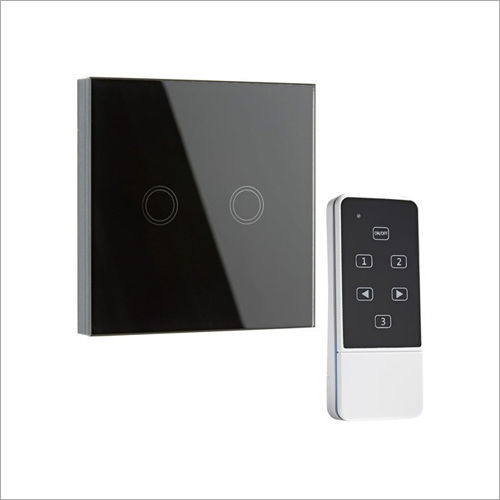Three Phase Remote Control Panel
Price 8000 INR/ Piece
Three Phase Remote Control Panel Specification
- Power Supply
- Electric
- Thermal Conductivity
- Standard industrial enclosure
- Features
- Auto/Manual mode, fault indication, remote operation support
- Components
- MCB, relays, contactors, terminal blocks, wiring
- Output
- Relay/Switch outputs for connected devices
- IP Rating
- IP54
- Sensors Specification
- Compatible with overload and phase failure relays
- Display Type
- LED indicators
- Input
- Three Phase AC
- Usage
- For managing three phase motor and machinery operations
- Power Source
- Electric
- Interface
- Wired remote input/output terminals
- Response Time
- <50 ms
- Operating Temperature
- -10C to +55C
- Product Type
- Remote Control Panel
- Application
- Industrial
- Rated Voltage
- 415V AC
- Supply Voltage
- 415V AC
- Size
- Different Available
- Dimension (L*W*H)
- 400 x 300 x 200 mm (standard)
- Function
- Remote controlling and monitoring of three phase industrial electrical systems
- Color
- Gray
- Weight
- Approx. 6-8 kg
- Warranty
- Yes
- Capacity
- Supports up to 3 motors
- Thickness
- 1.2 mm (body enclosure)
- Current Rating
- 32A
- Frequency
- 50/60 Hz
Three Phase Remote Control Panel Trade Information
- Minimum Order Quantity
- 1 Piece
- Supply Ability
- 1 Piece Per Day
- Delivery Time
- 7 Days
- Main Domestic Market
- All India
About Three Phase Remote Control Panel
As a prominent enterprise, we are actively engrossed in offering the finest quality Three Phase Remote Control Panel. The control panel is engineered to be utilized for the control and display of operational parameters of different types, and configurations monitored systems, and machines. At our reputed vendors' production facilities, it is engineered and manufactured by talented professionals with updated technology, superior quality crystal glass material and other components ensuring its outstanding performance. Comes with 3 years warranty, Three Phase Remote Control Panel is featured with 1 channel, 230V, 50Hz, IP55, and 20m remote distance.
Specification
| Channels | 1CH |
| Remote Distance | 20 m |
| Warranty | 3 years |
| Material | Crystal Glass |
| Voltage (V) | 230 |
| Frequency (Hz) | 50 |
| IP Rating | IP55 |
| Phase | Three |
Cutting-Edge Safety and Compliance
This control panel meets stringent CE certification and IS/IEC standards, ensuring top-quality safety and performance. Integrated protection features such as short circuit and overload safeguards help prevent equipment damage and downtime. Additionally, it supports compatibility with overload and phase failure relays, further elevating system reliability.
Versatile Installation and Operation
Engineered for straightforward installation, the panels wall-mounted design fits seamlessly in various industrial environments. Cable entry knockouts on multiple sides provide hassle-free wiring connections. The inclusion of both auto and manual operation modes allows flexible management of three phase loads to suit unique operational demands.
User-Friendly Control and Monitoring
Operators can manage machinery with ease using the built-in panel buttons or an external wired remote push button station. Real-time status updates are provided by intuitive LED indicators and fault signals. This streamlined interface boosts operational transparency and efficiency, making it ideal for maintenance teams in dynamic industrial workplaces.
FAQs of Three Phase Remote Control Panel:
Q: How is the Three Phase Remote Control Panel installed and what mounting options are available?
A: The control panel is designed for wall mounting, providing a secure and space-efficient installation. Cable knockouts located at the bottom and sides of the enclosure facilitate easy wiring during setup in industrial environments.Q: What safety features does the panel offer for industrial motor and machinery operations?
A: Built-in short circuit and overload protection safeguard connected equipment from electrical faults. The panel is compatible with overload and phase failure relays, and has an emergency stop button for immediate manual intervention when required.Q: When should I use the auto/manual modes provided by this control panel?
A: Auto mode is beneficial for automated, consistent operation of machinery, whereas manual mode is ideal during setup, maintenance, or troubleshootingempowering operators with direct control of the connected motors and devices.Q: Where can this remote control panel be used and is it suitable for harsh environments?
A: With an IP54 rating and robust powder-coated steel body, the panel is suitable for demanding industrial settings, including factories, workshops, and other environments where three-phase motor management is required.Q: What processes and machinery can be managed using this control panel?
A: The panel is designed to control and monitor up to three three-phase motors or industrial machines. Its relay/switch outputs allow seamless integration with various industrial equipment, supporting electric motor start/stop operations and emergency handling.Q: What benefits does remote control operation provide for industrial applications?
A: Remote operation capability enhances workplace safety by allowing operators to manage equipment from a safe distance. It also improves operational efficiency and reduces downtime by enabling prompt responses to status indicators and fault conditions.Q: How does the panel indicate faults or operating status to users?
A: The built-in LED indicators display real-time operational status, while additional fault indication features notify users promptly of any issues such as overload, short circuit, or phase failure, ensuring timely intervention and maintenance.

Price:
- 50
- 100
- 200
- 250
- 500
- 1000+

 Send Inquiry
Send Inquiry Send Inquiry
Send Inquiry
